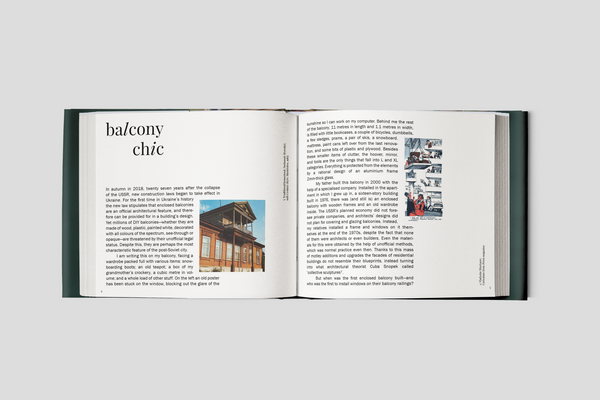What Tesla or BMW have done in the electric car industry; Rollin Technologies has started in electric micro-mobility. Here is our portrait and interview with the Hungarian pioneers of the e-scooter revolution who can rewrite our modern urban landscape.
What Tesla or BMW have done in the electric car industry; Rollin Technologies has started in electric micro-mobility. They are one of the first to build an e-scooter charging network, with proprietary charging stations providing the technological basis, opening a new dimension in the increasingly popular but still very divisive world of e-scooter sharing systems. A few years ago, e-scooters were launched explicitly to enable people to travel short distances of a few kilometers quickly and conveniently. Thus, reducing the polluting car traffic, which is one of the most critical problems of urbanization in Europe.
Rollin’s network of charging and docking stations will enable e-scooter operators to operate more efficiently, optimize costs, and provide cities and municipalities with a systematic parking solution. The experience of the pilot period in the 1st District of Budapest shows that users always insert the scooters in the stations and, if there are no more free spaces, they park them in an organized manner. In close cooperation with local service providers, installations in Budapest and other Hungarian cities are planned for the next period. All of this will be financed by Hungarian resources and by local developers.
Few more polarizing vehicles are available in major cities than the infamous e-scooters. Where do you see the e-scooter trends going? Is it a fad or a lasting change in mobility?
As our innovation’s name says: we create e-scooter sharing systems. Opinions are divided; this is rightly a susceptible subject. E-scooters are transport devices that offer a perfect solution for specific user groups in certain situations in urban transport. However, it is new and culturally inexperienced; thus, it can sometimes be disturbing. We should not forget that urban transportation in its current state is incredibly polluting, not to mention its impact on people’s mental well-being. In recent years, the rise of electric micro-mobility, including e-scooters, is not a coincidence. Regardless of how we look, the e-scooter is a convenient and very efficient way to travel a few kilometers in the city, instead of sitting in traffic jams. Its role in urban transport would essentially be to provide fast and convenient ways from the major public transport hubs in the inner districts. If we look at the trends of the past few years, both from the user and investor sides, we can see that the e-scooter industry is growing dramatically, and it does not seem to slow down. The question is how we can operate it in the future in a less disruptive way to those who do not use it.
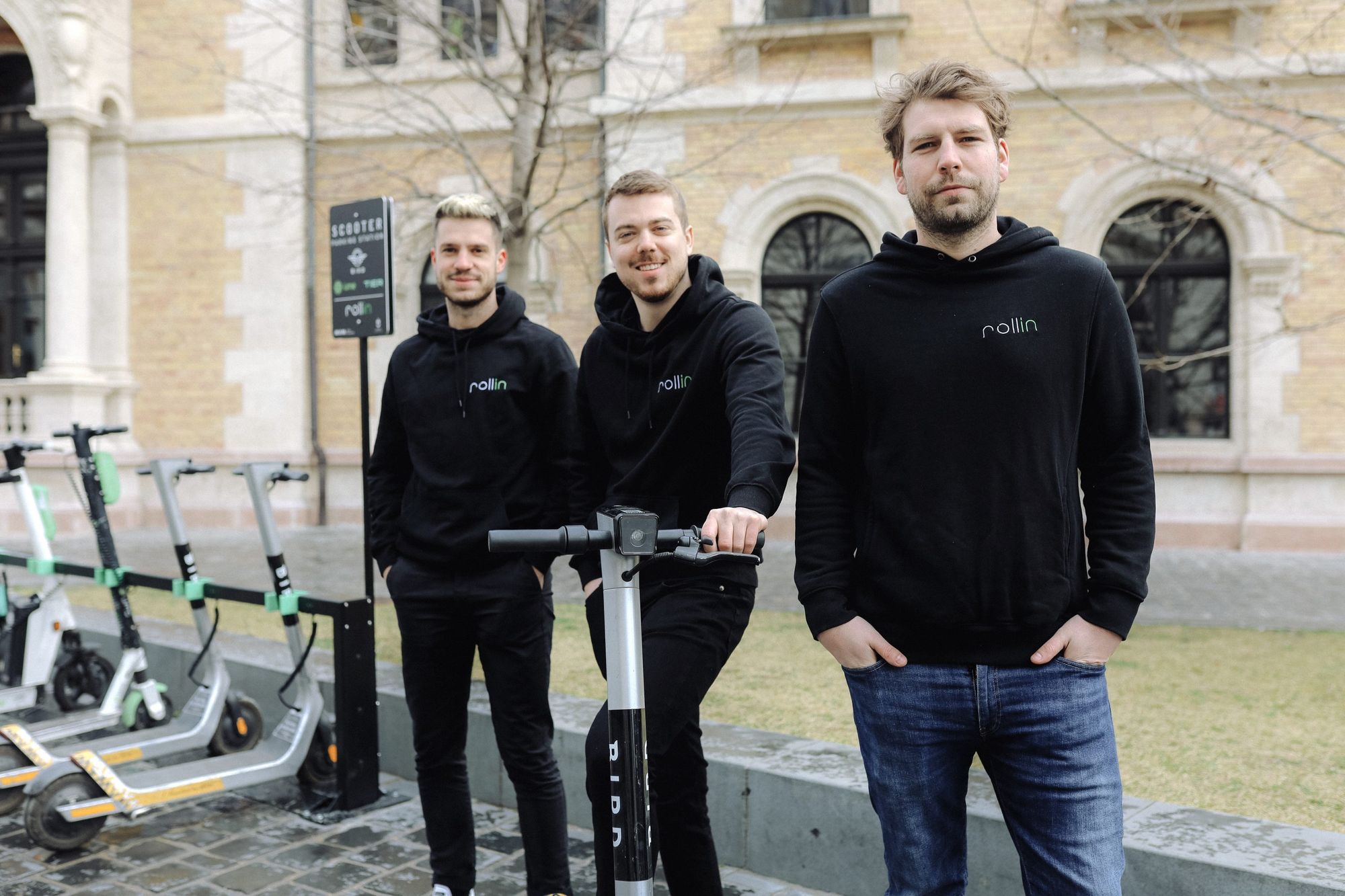
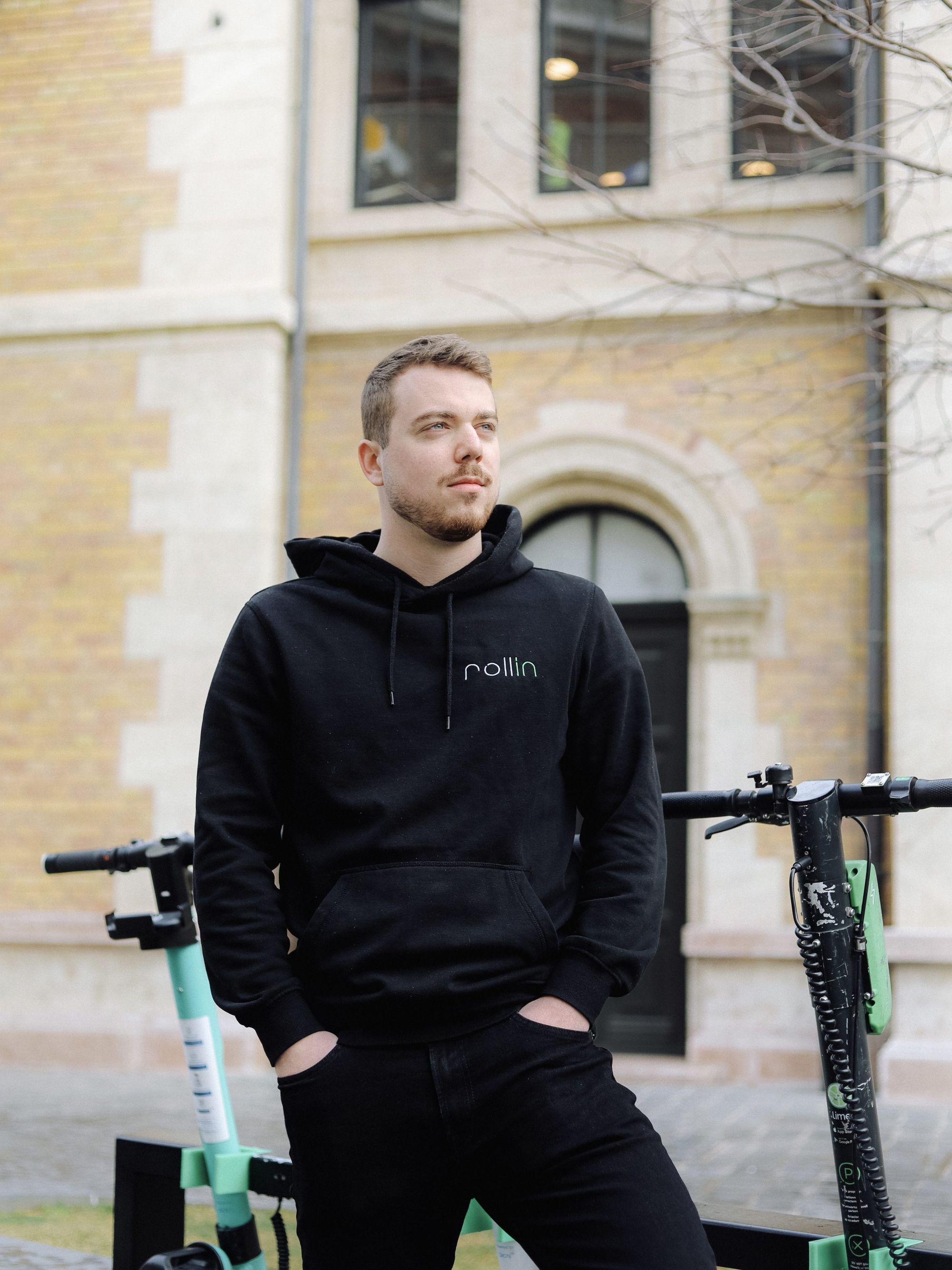


What is the issue that Rollin is trying to solve? And how complex does this look?
We cannot deny that the scattered or incorrectly parked scooters often cause chaos in the city. The e-scooters are effective and enjoyable mobility tools. However, if they encounter social and political resistance, they will struggle to fulfill the role that we all expect from them. Infrastructure development is necessary, but it is not the responsibility of the service providers. That is where we can help: to organize the community e-scooters on the streets. Moreover, equally importantly, we developed not merely docks but also charging stations. If these charging stations are deployed nationwide, we would be one of the first to operate an electric micro-mobility charging network. The charging of scooters is done now with replaceable batteries or human power. We can optimize the costs of charging compared to the present situation. Furthermore, scooters on the streets will operate at higher utilization rates for longer periods. And on top of all, the acceptance and opportunities of the service providers who work with us will hopefully also increase due to our solution. We envisioned a station capable of charging by induction two years ago. But due to the steep rise in raw material prices, we finally decided on the current plug-in solution. The present Rollin stations are for fast charging, which means it takes about two hours to charge a scooter from zero fully.
What is the basic concept, and how does it integrate into modern urbanization?
We want to expand in the urban environment by building a charging and docking network. This is consistent with allowing electric micro-mobility devices to be deposited only at specific points. In the future, these locations can be equipped with Rollin stations. In this way, the scooters and other electric devices can be sorted and charged simultaneously. Furthermore, the private scooter users’ market is an increasingly attractive target. More and more people use e-scooters in their daily lives. We are often told how easy it would be to leave the scooters outside a cinema or football ground, locked up and charging. We have already finished a specific product for this problem, and its production can start at any time.
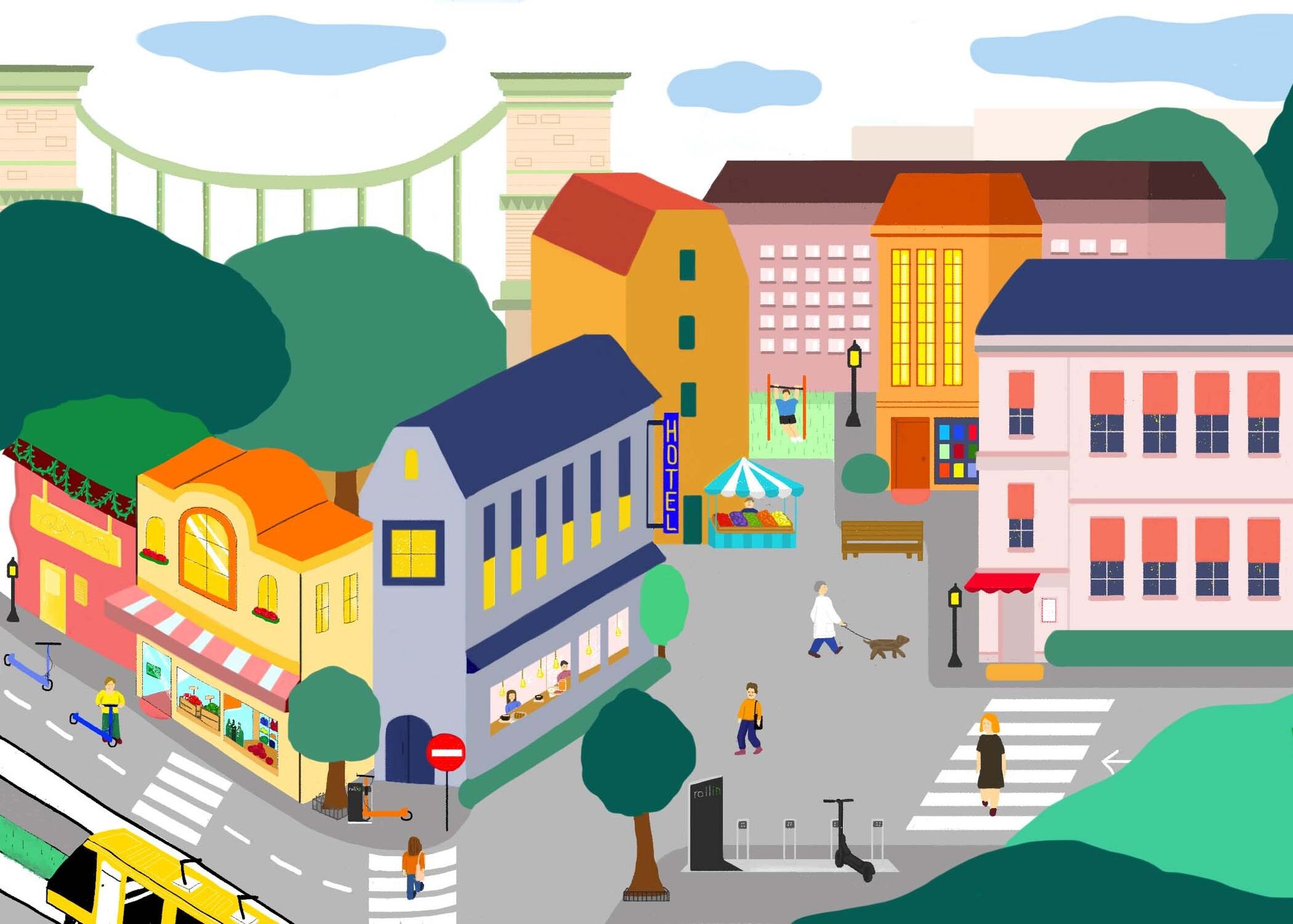
What are Rollin’s long-term plans in the Hungarian and international markets?
Firstly, we want to achieve that if people mention electric micro-mobility, they immediately associate with Rollin. It is a time-consuming, challenging task. Nonetheless, we are making good progress so far. We hope to be everywhere where micro-mobility vehicles need to be organized and charged in the next few years. In the long term, we count on building a business relationship with one of the prominent service providers that can be the basis of our international expansion. We are already planning to sell our products to office buildings, apartment complexes, and hotels in the international private users’ market.
What do you envision as the next step in the innovation of e-scooter electromobility?
We see two factors simultaneously playing an important role. Firstly, the possibility to rent the community scooters at a slightly lower price in the future: Can the costs be adjusted to show even an increase on the revenue side? We want to offer a solution to the necessary optimization of the operating expenses. Secondly, in the private scooters market, we have already started to see a boom. There is fierce competition between manufacturers; they can reach a growing number of users with newer and newer scooters. It is almost certain that the electric scooter will be a key transport vehicle in the next decade.
How open are people to innovations? Does Rollin have an indirect educational role, or do you “merely” research, develop and create?
The reception has been very positive after the first few months. For example, the municipality of the 1st District of Budapest is receiving letters from residents asking for more Rollin stations in the neighborhood to improve tidiness. The idea is simple if there is a station, people put their scooters there. However, users leave the scooters more organized near the station even if it is full. We did not expect this. We are convinced that reforming urban transportation is a shared task, and everyone has a role to play in it. Service providers, municipalities, and investors are essential for us. We want e-scootering to be more civilized. We aim to encourage more people to use e-scooters, and thus, to help to make urban transport a little cleaner.


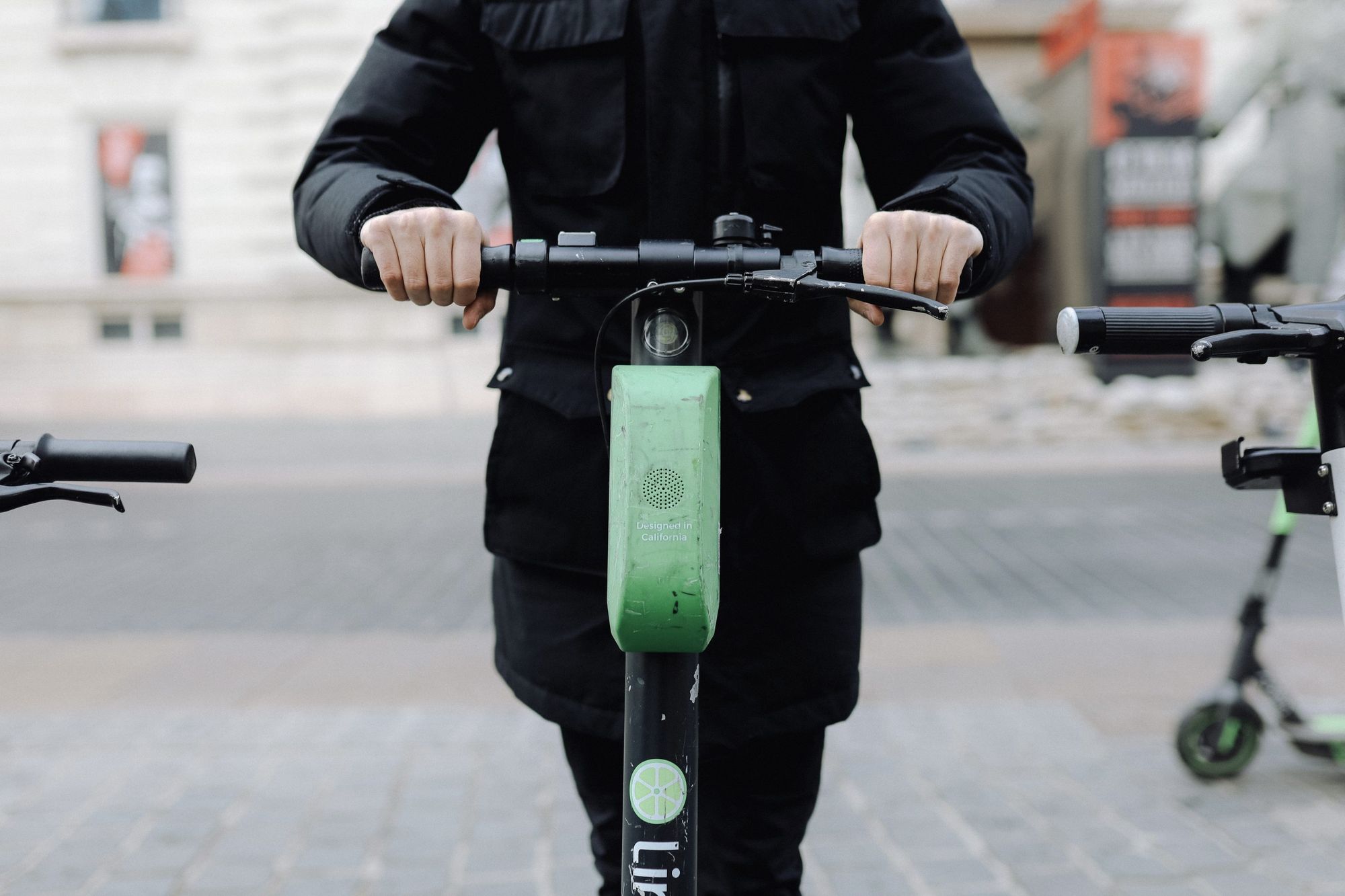

How can e-mobility revolutionize our everyday lives?
If e-scooters become widespread, people have a mode of transport that is easy to stand on, fast to move around, and they can enjoy total freedom. Still, developed infrastructure and regulatory environment are also necessary. E-scooters are valuable since they make our lives more time- energy- and cost-efficient, and I do not think we need to say anything else. An increasing number of hotels, office buildings, and companies tell us that they want to rent Rollin stations in their garages for the employees. It is a great incentive to encourage colleagues to choose an environment-friendly transportation mode. Hotel guests can use the e-scooters for sightseeing and short trips and leave the vehicles at the Rollin station when they get back. Furthermore, in cooperation with public transport operators, we could achieve that there are always charged scooters in an organized manner at all hubs in the city. Commuters who get off the bus or train could pick them up and reach any corner of the city center in ten minutes. It is indisputable that this would be the fastest and the most efficient solution.
What impact can an established e-scooter network, coupled with Rollin docking stations, have in congested and grey cities? What are the urban planning considerations you working with?
We envision that the Rollin charging network will provide the infrastructure for electric micro-mobility in all Hungarian cities in five years. It makes a real difference if hundreds or even thousands of scooters are thrown away in the city and making everyone furious or if the scooters are parked neatly, resulting in a growing number of enthusiastic users. Our design can be placed and installed in all urban landscapes in the easiest possible way. Our aim was not to build a statue but to develop a product with a modern, streamlined design, which can be a vital component of any city in the 21st century.
Rollin Technologies | Web | Facebook | LinkedIn | Instagram
Graphic: Réka Pisla | Hype&Hyper
Photo: Dániel Gaál | Hype&Hyper

A unique “sanctuary” of craft beer culture was built in Győr | Apátúr Sörház

The story of the diploma collection by USE unused
